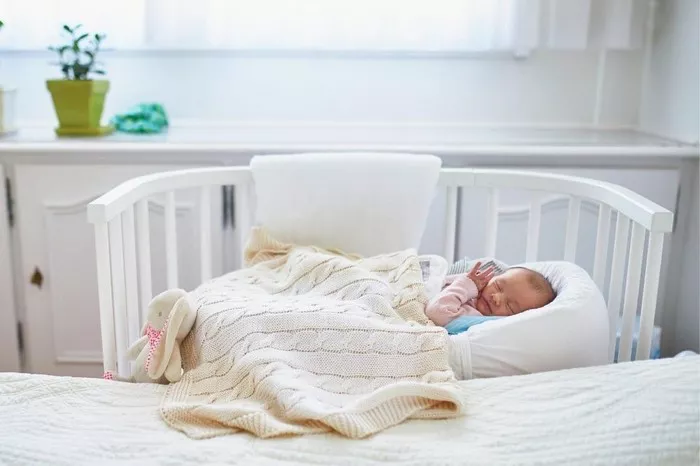Understanding Newborn Temperature Regulation:
Newborns, with their delicate and developing bodies, require special attention when it comes to regulating their body temperature, especially during the winter months. Unlike adults, newborns do not regulate their body temperature as effectively. They are more susceptible to fluctuations in temperature due to their smaller body mass and higher surface area to body ratio. In fact, newborns lose heat about four times faster than adults, making it essential for parents to dress them appropriately to maintain a safe and comfortable temperature.
Indoor Dressing Guidelines for Winter:
One of the key aspects of ensuring your newborn’s comfort during winter sleep is maintaining an optimal indoor room temperature. Experts recommend keeping the nursery temperature between 68°F and 72°F (20°C to 22°C) to create a cozy and conducive sleeping environment. Here are some guidelines for dressing your newborn indoors during winter:
1. Layering is Crucial: Opt for layered clothing to regulate your baby’s body temperature effectively. Start with a lightweight, fitted onesie or bodysuit as the base layer. This provides a comfortable foundation while keeping your baby cozy.
2. Follow the “One Additional Layer” Rule: As a general rule of thumb, dress your baby in one more layer than what you find comfortable. This additional layer can be a soft cotton sleeper or a lightweight sleep sack, depending on the room temperature.
3. Choose Breathable Fabrics: Opt for breathable fabrics such as cotton or bamboo to prevent overheating. These materials allow for proper air circulation, helping your baby maintain a comfortable body temperature throughout the night.
Types of Sleepwear for Newborns:
Selecting the right sleepwear for your newborn is essential for ensuring both comfort and safety during winter nights. Here are some popular options:
1. Onesies: Lightweight onesies are versatile and make an excellent primary layer of sleepwear for newborns. Choose ones with snaps or zippers for easy diaper changes during nighttime.
2. Sleep Sacks or Wearable Blankets: Sleep sacks or wearable blankets are safe alternatives to traditional blankets, which pose suffocation risks for infants. These cozy sacks provide warmth without the risk of covering your baby’s face. Opt for sleeveless designs to prevent overheating and ensure ease of movement.
3. Swaddling (for Newborns): Swaddling can help calm newborns and promote better sleep by mimicking the secure feeling of being in the womb. However, it’s essential to follow safe swaddling practices to prevent hip dysplasia and ensure proper airflow. Use lightweight, breathable swaddles and avoid wrapping too tightly around the hips.
Outdoor Dressing for Winter:
When venturing outdoors with your newborn during winter, proper dressing is crucial to protect them from the cold weather. Here are some tips for outdoor dressing:
1. Layering is Key: Just like indoors, layering is essential for outdoor dressing. Start with a lightweight base layer, such as a onesie or bodysuit, and add additional layers as needed based on the outdoor temperature.
2. Use a Warm, Breathable Coat or Snowsuit: Invest in a high-quality, insulated coat or snowsuit to keep your baby warm and cozy during outdoor excursions. Ensure that the outerwear is breathable to prevent overheating and features easy-to-use closures for quick dressing and undressing.
3. Add a Hat and Mittens: Protect your baby’s extremities from the cold by adding a snug-fitting hat and mittens. A hat helps retain heat and prevents heat loss from the head, while mittens keep tiny hands warm and protected from frostbite.
Safety Precautions:
Ensuring your newborn’s safety is paramount, especially during sleep. Here are some safety precautions to keep in mind:
1. Avoid Covering the Baby’s Head During Sleep: While it may seem tempting to cover your baby’s head with a hat or hood, it’s essential to avoid doing so during sleep. Covering the head can lead to overheating and increase the risk of suffocation. Instead, dress your baby in warm sleepwear and maintain a comfortable room temperature.
2. Keep Blankets Out of the Crib: To reduce the risk of suffocation, strangulation, and Sudden Infant Death Syndrome (SIDS), avoid placing blankets, pillows, or stuffed animals in your baby’s crib. Opt for safer alternatives such as sleep sacks or wearable blankets, which provide warmth without the risk of suffocation.
By following these guidelines and safety precautions, you can ensure that your newborn stays warm, comfortable, and safe during winter sleep. Remember to monitor your baby’s temperature regularly and adjust their clothing layers accordingly to maintain optimal comfort throughout the night. With proper dressing and care, you can create a cozy sleeping environment that promotes healthy sleep habits and overall well-being for your precious little one.


